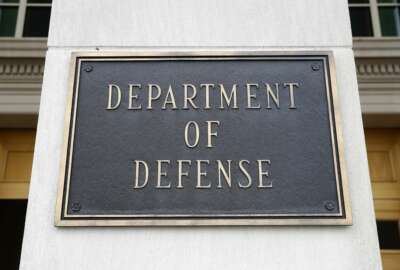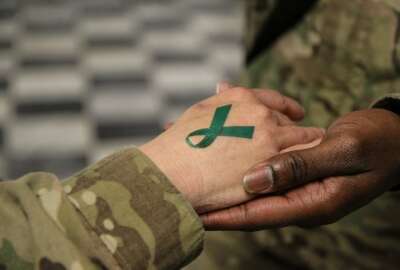
The military is facing a new global threat: extreme heat
The U.S. military wants to own heat much like it owns night vision.
Best listening experience is on Chrome, Firefox or Safari. Subscribe to Federal Drive’s daily audio interviews on Apple Podcasts or PodcastOne.
As the Defense Department keeps its eye on China and Russia, a new rival is also emerging for the military to contend with — heat.
Extreme heat is becoming an increasingly prevalent challenge. A study from the Proceedings of the National Academy of Sciences found that the number of extreme heat days have tripled since the 1980s and are likely to continue to increase.
What’s particularly dangerous is the wet bulb temperature, an indicator that accounts for humidity and better measures how dangerous conditions are outside. The study counted the number of days with extreme wet bulb heat as opposed to just the temperature.
All of that is to say that doing strenuous activity outside, like what many service members need to do for their jobs, is even more dangerous because of the heat and DoD is trying to think about it differently.
“If we look towards the future, we’re going to be asking our soldiers and marines, sailors and airmen to operate in more extreme temperatures hotter and more humid,” Richard Kidd, DoD deputy assistant secretary for environment and energy resilience, said Thursday at the GovExec Climate Summit. “The fact that we ask them to do that poses a significant risk to their welfare. We’ve already started to talk about things like tactical cooling.”
That could mean setting up cooling centers on the battlefield or on the deck of aircraft carriers, Kidd said.
“Operating on the deck of an aircraft carrier in the Persian Gulf is one of the hottest environments in the department,” Kidd noted.
It also means investing in new technologies.
The Air Force recently licensed a liquid cooled plate carrier invented by one of its airmen.
“A series of tubes and valves connect a small, battery-powered pump to the hydration bladder,” the product description states. “The pump, when actuated, draws fluid into the thermally conductive pad beneath the body armor to the chest, back, sides of the torso, waist, neck, and/or head. Over time, as the fluid has warmed and lost its ability to provide further cooling effects, the user may drink it and in so doing draw cold water from the reservoir into the system.”
It’s not just combating the heat that the Pentagon is interested in, though. DoD is interested in taking advantage of the heat as well. As climate change continues to alter the world, heat may be an opportunity for the U.S. military to operate in places where others can’t.
“One of the things about the climate adaptation plan that the department published is we want to be able to operate under all future conditions,” Kidd said. “If you go back 30 or 40 years ago, we were concerned that we couldn’t operate at night. There was a significant investment in night vision. Now the United States military can operate day and night, all our assets, essentially. We have a tremendous advantage in the fact that we’re able to do that. Looking forward to a hotter world. We need to be able to operate in all temperatures. We need to be able to own the heat the same way that we now own the night.”
Copyright © 2024 Federal News Network. All rights reserved. This website is not intended for users located within the European Economic Area.
Scott Maucione is a defense reporter for Federal News Network and reports on human capital, workforce and the Defense Department at-large.
Follow @smaucioneWFED
Related Stories






